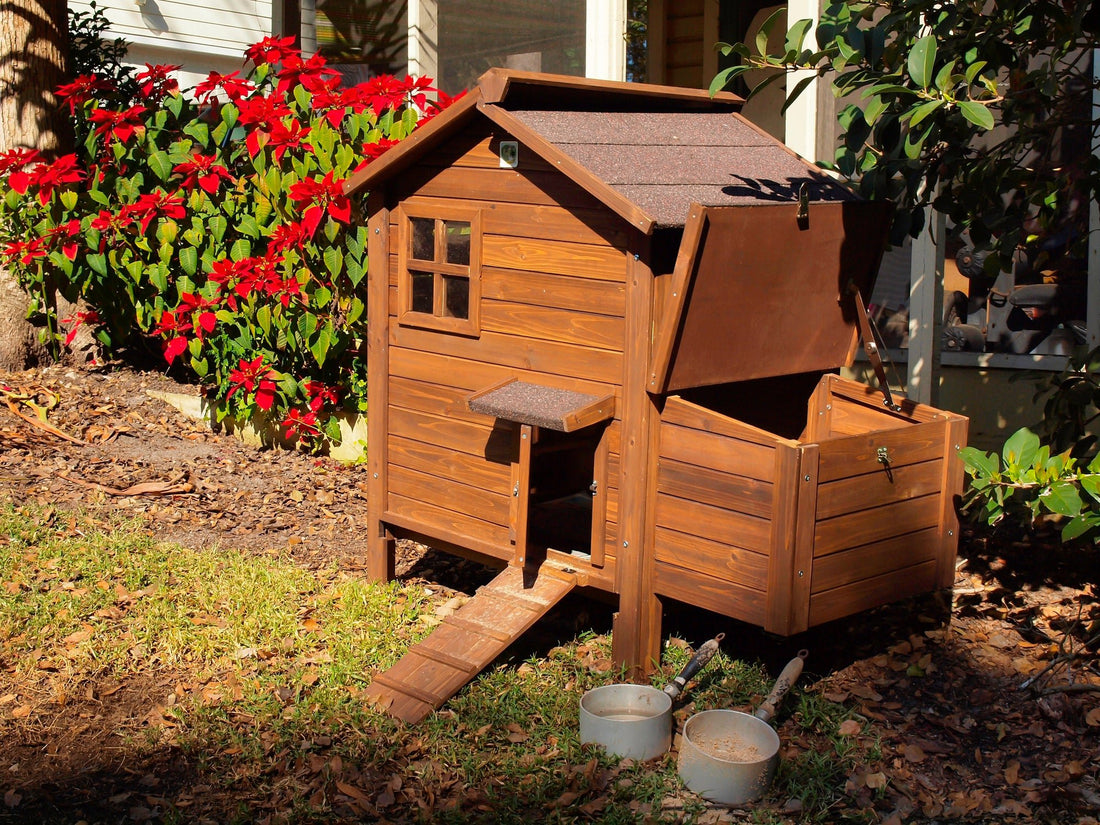Building a chicken coop isn't just about providing shelter for your chickens; it's about creating a safe, comfortable home that meets their needs and fits seamlessly into your lifestyle and landscape. Whether you're a novice builder or a seasoned DIY enthusiast, constructing your own chicken coop can be a rewarding project that personalizes your poultry experience. This blog post will guide you through the essentials of designing, building, and customizing a chicken coop that is not only functional but also a charming addition to your backyard.
Planning Your Coop: The Blueprint of Success
Before you dive into the actual building process, careful planning is key. Consider the size of your flock, as this will dictate the dimensions of your coop. A good rule of thumb is to allow about 3-4 square feet per chicken inside the coop and about 10 square feet per chicken in the outdoor run. Also, think about the location; it should be on high ground to avoid flooding, facing south to get ample sunlight, and near your house for easy access.
Gathering Materials: Choosing Quality and Sustainability
Selecting the right materials is crucial for building a durable and environmentally friendly coop. Use untreated wood to avoid chemicals that could harm your chickens. Reclaimed wood is not only a sustainable choice but also adds character to your coop. For the roofing, consider using shingles for waterproofing or a clear polycarbonate sheet to let in natural light.
Foundation First: Setting the Stage
A solid foundation is essential for any structure, including your chicken coop. Depending on your location, you may need to dig below the frost line to set the foundation posts. Use concrete to secure the posts or create a concrete slab on which to build. This will prevent predators from digging their way into the coop and ensure stability against strong winds.
Framing Your Coop: The Skeleton of Your Structure
Once your foundation is set, the next step is to frame the structure. Create a floor plan that includes space for nesting boxes, perches, and a feeding area. Use sturdy framing techniques such as joist hangers and corner braces to ensure the coop’s integrity. Remember, the better the frame, the longer your coop will last.
Roofing and Walls: Sealing and Protecting
The roof of your chicken coop should provide protection from the elements and adequate ventilation. A pitched roof helps with rain runoff and can create additional air space above the coop, which aids in temperature regulation. When it comes to walls, insulation is key, especially in colder climates. Consider using natural insulators like straw bales or hemp blocks.
Interior Design: Function Meets Comfort
Inside the coop, your chickens need a comfortable and functional space to roost and lay eggs. Ensure there are enough nesting boxes (one box for every three hens) and that perches are spaced far enough apart to prevent conflict. Flooring should be easy to clean; sand or straw are popular choices as they are absorbent and easy to replace.
Custom Features: Personal Touches
Adding custom features can enhance the functionality of your coop and make it a unique addition to your garden. Consider building a chicken run with a retractable roof, incorporating an automatic water system, or adding external nesting box access for easy egg collection. Personal touches like decorative trim or painting the coop to match your house can integrate it beautifully with your overall property aesthetic.
Predator Proofing: Safety First
Protecting your chickens from predators is non-negotiable. Ensure the coop is fully enclosed with hardware cloth, not chicken wire, which can be easily breached. Bury the wire at least 12 inches underground around the perimeter to prevent digging predators. Locks on doors and lids should be secure and tamper-proof.
Maintenance and Upkeep: Ensuring Longevity
Finally, think about the long-term maintenance of your chicken coop. Use materials that are easy to clean and resistant to rot. Set up a regular cleaning schedule to keep the coop hygienic, and inspect it periodically for signs of wear or potential breaches in security.
Building your own DIY chicken coop is a fulfilling project that enhances your self-sufficiency and deepens your connection to your backyard ecosystem. With the right planning, materials, and design, your chicken coop will not only be a cozy retreat for your feathered friends but also a testament to your craftsmanship and care.

